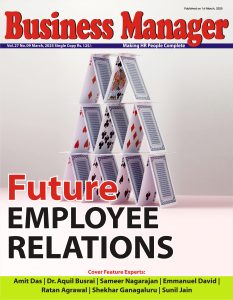The world of work has changed a lot in the last two years. Today what we witness is very different from 2019. Now that the COVID-19 pandemic appears to be finally fading away, it’s time to take stock of the changes it brought to the industries globally. From an HR perspective, organisations have dealt with numerous challenges ranging from labour shortages, great resignation, the rise of remote workers, etc.
These brand-new post-pandemic realities have, in fact, fundamentally altered the recruiting field. If the pandemic has any redeeming qualities, they may lie in the new operational agility and employee-first ethos that COVID-19 appears to have fostered.
The changing dynamics of work
The workplace of 2022 is more likely than ever to mirror the attitudes of the outside world because it is dynamic, digital, flexible, and adaptable. The workforce has a more outspoken outlook on life and work, and many people place less value on their jobs. Today’s workforce is more concerned with work-life integration than work-life balance. They are driven to live their lives their way, are media-savvy, socially sensitive, and have set expectations to live. Employers today must accommodate a variety of brands and device categories as workers opt for the services that best suit their professional and personal lives.
Also read: Dipankar Ghosh joins Apollo Tyres as Group Head-HR
Talent acquisition is at the heart of this. Changes in how job candidates hunt for employment and how and where they do their tasks have been spurred by new expectations from employers and new technology accepted by candidates. The workforce has experienced significant changes recently, and the most significant ones will likely take some time to take effect.
Some of the critical changes that accelerated in the recruitment industry post-pandemic can be identified below:
Virtual hiring: According to 70% of survey participants from LinkedIn, a hybrid hiring process that mixes virtual and in-person steps will become more common due to the related cost and time savings. This is similar to how a hybrid workforce of onsite and remote employees will become more mainstream.
Internal hiring: According to some experts, companies will develop their workforce through internal mobility programs connected to reskilling initiatives or by engaging contingent talent rather than hiring from outside. Others expect businesses to keep shifting away from static occupations and toward cross-functional, project-based work. The transition to internal mobility has several advantages, including enhanced engagement, reduced expenses, and a quicker hiring process, but the most significant benefit may be increased retention.
These brand-new post-pandemic realities have, in fact, fundamentally altered the recruiting field. If the pandemic has any redeeming qualities, they may lie in the new operational agility and employee-first ethos that COVID-19 appears to have fostered.
Diversity, equity, and inclusion (DE&I): DE&I will continue to be a focus for recruiters, especially as more job candidates base their hiring decisions on how clearly a company is committed to DE&I. More recruiters will push for eliminating arbitrary entry barriers from job criteria like educational requirements, promote a wider pool of candidates, and make hiring managers responsible for advancing those individuals through the recruiting process.
Extensive hiring pool: Employers now have access to a larger pool of candidates because the pandemic has caused businesses to reevaluate every aspect of their daily operations, resulting in significant productivity from remote workers. It is no longer necessary for all employees to do business from a desk inside an office complex. As a result, many companies can look outside of their own cities, regions, or even states for outstanding personnel.
None of these trends are especially new. For instance, many companies have long encouraged employees to move around the business, and the first diversity training happened way back in the 1960s by an American organisation. But during 2020 and the beginning of 2021, the effects of COVID-19 and the uprising were so pervasive that employees, leaders, recruiters, managers, and applicants were left with no choice but to adjust to, if not embrace, them. That implies that everyone participating in the hiring process needs to modify their strategy to consider today’s realities.
Stay connected with us on social media platform for instant update click here to join our LinkedIn, Twitter & Facebook
























Add comment